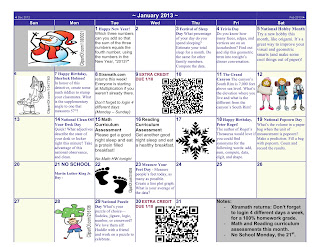The role of an Instructional Coach, from now on known as an "iCoach", is to increase the instructional capacity of a teachers. This is done by supporting teachers by building their teaching skills, assisting others in applying new knowledge, and providing ongoing professional development.
Why did I choose to leave the classroom and seek out an opportunity to be an iCoach?
Simple! I knew that I needed to reach more than just the 22 children in my classroom. Also, there are amazing educators out there, and with support they can go from "good" to "GREAT"!
How will an iCoach help teachers?
- Help Raise Achievement
- Reviewing Data - Facilitating Data dialogue, help identify student needs based on the data, and help create a plan of action to alter instruction.
- Facilitate Professional Development
- Promote the use of Research-Based Practices
- Expertise - Share research, effective instructional practices, and emerging trends.
- Increase Teacher Effectiveness
- Model Lessons - Modeling lessons provides an opportunity for teachers to watch and learn new strategies or instructional practices.
- Observations - Observe teachers and focus on things that teachers do well and provide feedback. iCoaches are seeking to help teachers improve and refine their practices.
- Encourage the Concept of Professional Learning Communities (PLC)
- Share Resources
What do I NOT do as an iCoach?
- Evaluate or judge teachers: That is the principals job!
- Take the place of the principal: I am here to provide support to the principal and teachers.
- Act like the expert: It will turn off teachers to my support if I act like I have all the answers.
This adventure as an iCoach has started out on a "rocky" road, but like someone recently said to me, "Getting a little nervous/mad/frustrated is part of the "learning" and "training" process. It is never going to be perfect...and that is by design. If you have questions or problems to be solved: get the questions answered and solve the problem. Let yourself have the experience and you will become better for it!"
















































